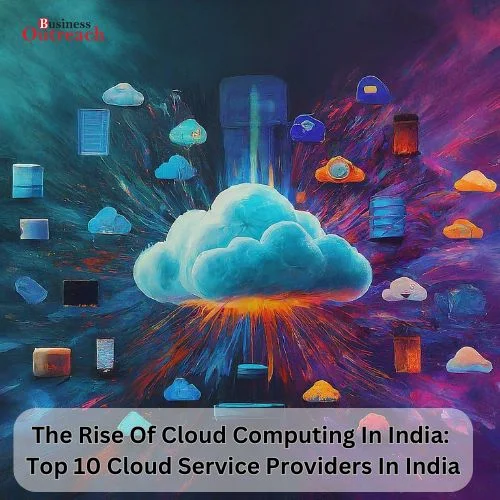The operating system is a crucial component for the hybrid cloud journey. Digitalization demands an enterprise-grade operating system that is secure, capable of operating across hybrid cloud environments, and provides a consistent layer. Selecting a standardized operating environment can improve productivity and decrease downtime caused by technical issues.
What is a Hybrid Cloud?
A hybrid cloud is a computing setting that mixes a public cloud and a non-public cloud by permitting knowledge and applications to be shared between them. Once computing and process demand fluctuates, hybrid cloud computing provides businesses the flexibility to seamlessly scale their on-premises infrastructure up to the general public cloud to handle any overflow—without giving third-party knowledge centers access to all of their data. Organizations gain the pliability and computing power of the general public cloud for basic and non-sensitive computing tasks while keeping business-critical applications and knowledge on-premises, safely behind an organization firewall.
Hybrid Cloud Storage Diversification
Hybrid cloud design permits MSPs to include a mix of numerous platforms together with public clouds and personal clouds. By providing a large vary of hybrid cloud storage choices, you’ll attract a wider type of customers, open doors into new market segments, and guarantee knowledge security and accessibility for all of your customers, no matter their location and device sort.
Hybrid Cloud Solutions Flexibility
One of the foremost appreciated hybrid cloud advantages is its flexibility. For MSPs, the hybrid cloud approach permits you to produce resources once and wherever they’re required whereas minimizing the expenses needed for always-on capabilities. referred to as “cloud bursting”, hybrid cloud services tack personal and public clouds to additional expeditiously handle peaks and valleys in IT demands in order that service interruptions square measure reduced or eliminated.
Hybrid Cloud price Savings
A factor that MSPs can’t afford to overlook once shift to hybrid cloud solutions is the savings to be had by substitution multiple solutions – and also the hardware, training, and maintenance time that goes into them – for one hybrid cloud design. whereas some assume the complexness of the hybrid cloud can result in magnified prices, improved easy use, and improved measurability to make sure that hybrid cloud prices and also the total price of possession (TCO) keep low.
How Do Hybrid Cloud Services Work?
Hybrid clouds mix public clouds and personal clouds, permitting knowledge to maneuver seamlessly between the environments. That interconnectivity is created potentially 1st through knowledge virtualization, then through connective tools and protocols like application programming interfaces (APIs), virtual personal networks (VPNs), and/or wide space networks (WANs).
Top 5 essential tools for managing hybrid cloud infrastructure
IBM Cloud:
IBM Cloud offers the organizations the infrastructure they have to develop or appraise the applications. These infrastructures embody public cloud, non-public cloud, or on-premises IT.
Features:
- IBM Cloud offers an Associate in Nursing integrated atmosphere that supports new and updated technologies and a multi-cloud atmosphere.
- This cloud platform permits the applications to be designed, deployed, and run on the most effective cloud atmosphere.
- Provides speed, measurability, and security whereas permitting cloud migration of the present apps and information.
Google Cloud Platform:
The Google cloud platform offers scalable and reliable hybrid cloud design that’s versatile enough to figure with the organization’s existing technology.
Features:
- Google cloud platform supports Google Cloud VM partners, ASCII text file packages, and brings existing applications to the platform.
- Stack driver is exploited through this economical cloud tool to supply a definite viewpoint on metrics, logs, and data.
- This cloud platform additionally permits you to simply monitor the consumption and scale back prices through reusability whereas supporting hybrid applications.
Microsoft Azure:
Microsoft Azure provides the good thing about developing and building applications as traditional on the Azure public cloud and on the on-premise Azure Stack. This Hybrid cloud application resolution helps to maximize productivity and ease the event and migration method for developers.
Features:
- Microsoft Azure eases the communication between Azure public and on-premise Azure stack, then provides hybrid property.
- This cloud resolution conjointly provides hybrid CI/CD through reliable tools across the Azure cloud and on-premise Azure stack.
- together with updated security operations through a centralized dashboard, Azure public cloud conjointly offers a unified read of security on-premises.
Cisco Cloud Centre:
Cisco cloud platform is especially famed for its accessibility to deploy and manage applications across varied environments, like knowledge centers, personal clouds, and even public clouds.
Features:
- This tool offers multi cloud policies that facilitate to induce management of positions of users in multi-cloud environments
- Helps the users to modify cloud and in-house deployments at one platform.
- Cisco cloud optimizes prices and ensures that organizations don’t acquire the services that don’t add price to their business.
Cloudability:
If your major expectations from the cloud management platform are visibility and improvement of your existing resources, Cloudability is the best hybrid cloud tool for you.
Features:
- Cloudability helps to optimize cloud pay by reducing the unused resources.
- This cloud platform allocates the cloud pay across varied business units, products, value centers, and varied roles.
- Provides full visibility into your clouds through reports and dashboards, and helps in business mapping.
The most vital issues in mind once selecting management tools for hybrid cloud are to form certain tools that work with all elements of your IT infrastructure which they call all aspects of your management wants one thing that the native management tools designed into hybrid cloud frameworks sometimes cannot do.















